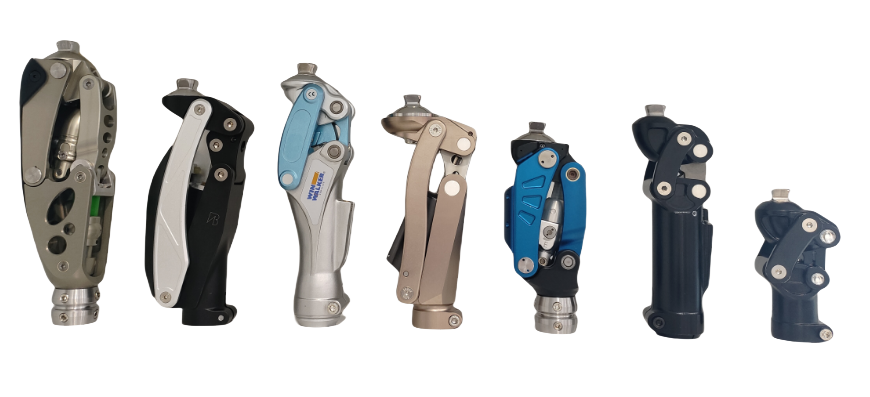Exploring Innovative Materials Used in Medical Prosthetic Implants: A Comprehensive Guide
Release Time:
Nov 23,2025
Exploring Innovative Materials Used in Medical Prosthetic Implants Table of Contents 1. Introduction to Medical Prosthetic Implants 2. Importance of Material Selection in Prosthetics 3. Traditional Materials in Prosthetic Implants 4. Innovative Materials Transforming Prosthetic Design 4.1 Titanium: The Gold Standard 4.2 Ceramics: A Biocompatible Op
Exploring Innovative Materials Used in Medical Prosthetic Implants
Table of Contents
- 1. Introduction to Medical Prosthetic Implants
- 2. Importance of Material Selection in Prosthetics
- 3. Traditional Materials in Prosthetic Implants
- 4. Innovative Materials Transforming Prosthetic Design
- 5. The Role of Biomedical Engineering in Material Development
- 6. Case Studies: Success Stories in Prosthetic Innovations
- 7. Challenges in Material Selection and Implementation
- 8. The Future of Prosthetic Materials
- 9. Frequently Asked Questions (FAQs)
- 10. Conclusion
1. Introduction to Medical Prosthetic Implants
The field of **medical prosthetic implants** has advanced significantly over the past few decades, driven by technological innovations and a deeper understanding of **biocompatibility**. Prosthetic implants play a crucial role in restoring functionality and improving the quality of life for individuals who have lost limbs due to various reasons, including trauma, disease, or congenital conditions. This article explores the innovative materials currently being used in prosthetic implants and how these materials contribute to better patient outcomes.
2. Importance of Material Selection in Prosthetics
The selection of materials for prosthetic implants is paramount for several reasons. **Durability**, **strength**, and **biocompatibility** are just a few factors that influence the effectiveness of an implant. Furthermore, the right materials can minimize the risk of rejection by the body and enhance the prosthesis' functional capabilities. In this section, we will discuss why material selection matters and the implications for patient care.
3. Traditional Materials in Prosthetic Implants
Historically, prosthetic implants have relied on a limited range of materials, including metals and some plastics. Traditional materials such as **stainless steel** were widely used due to their strength and durability. However, these materials often presented challenges related to weight, corrosion, and biocompatibility. Understanding these limitations has paved the way for the exploration of more innovative materials.
4. Innovative Materials Transforming Prosthetic Design
In recent years, the development of **innovative materials** has transformed the landscape of medical prosthetic implants. These materials are designed to improve functionality, reduce complications, and enhance the overall user experience. Here are some of the most noteworthy materials making waves in the field.
4.1 Titanium: The Gold Standard
Titanium is heralded as the gold standard in prosthetic materials, particularly for dental implants and orthopedic prosthetics. This metal is known for its high strength-to-weight ratio, exceptional corrosion resistance, and excellent biocompatibility, making it an ideal choice for long-term implantation. The use of titanium has enabled the creation of lighter, stronger, and more durable prosthetic devices that can withstand the rigors of daily use.
4.2 Ceramics: A Biocompatible Option
Ceramic materials, including alumina and zirconia, offer remarkable biocompatibility and wear resistance. These materials are especially beneficial in applications such as dental implants and joint replacements. Their ability to bond well with bone tissue makes them a great choice for applications requiring osseointegration. Additionally, ceramics are less prone to bacterial adhesion, reducing the risk of infection.
4.3 Polymers: Versatile and Lightweight
Polymers are increasingly being used in prosthetic applications due to their versatility and lightweight properties. **Polyethylene** and **polyurethane** are commonly employed in joint replacements and soft tissue prostheses. These materials can be engineered to mimic the natural properties of human tissues, providing better comfort and functionality. Furthermore, advancements in polymer technology have led to improved wear resistance and longevity in prosthetic applications.
4.4 Composite Materials: The Future of Prosthetics
Composite materials combine the strengths of multiple substances to create materials that are stronger and more durable than their individual components. These materials are gaining popularity in prosthetic design due to their lightweight nature and flexibility. For example, carbon fiber-reinforced composites offer exceptional strength while reducing the overall weight of the prosthesis, enhancing user comfort and mobility.
5. The Role of Biomedical Engineering in Material Development
Biomedical engineers play a vital role in the development of innovative materials for medical prosthetic implants. Their expertise allows for the design, testing, and improvement of materials that can safely interact with human tissues. Through rigorous research and development, biomedical engineers are at the forefront of creating new material solutions that address the challenges faced by traditional prosthetic designs.
6. Case Studies: Success Stories in Prosthetic Innovations
Exploring real-world applications of innovative materials can provide valuable insights into their effectiveness. Here, we examine several case studies showcasing the successful implementation of advanced materials in prosthetic designs. From enhanced limb mobility to improved patient satisfaction, these examples highlight the positive impact of innovative materials on patient outcomes.
7. Challenges in Material Selection and Implementation
Despite the advancements in material science, challenges remain in the selection and implementation of materials for prosthetic implants. Issues such as cost, manufacturing complexity, and regulatory hurdles can impede progress. Additionally, ensuring long-term durability and compatibility with human tissues continues to be a critical focus for researchers and manufacturers.
8. The Future of Prosthetic Materials
As technology continues to evolve, the future of prosthetic materials looks promising. Emerging trends, such as **3D printing** and **biomaterials**, are set to revolutionize the way prosthetic implants are designed and produced. These advancements could lead to more personalized solutions, allowing for better fitting and more effective functionality tailored to individual patient needs.
9. Frequently Asked Questions (FAQs)
1. What are the most commonly used materials in prosthetic implants?
The most commonly used materials include titanium, ceramics, polymers, and composites, each offering unique advantages in terms of strength, weight, and biocompatibility.
2. How do innovative materials improve patient outcomes?
Innovative materials enhance patient outcomes by increasing the longevity of implants, improving comfort and functionality, and reducing the risk of complications such as infection or rejection.
3. What role does biomedical engineering play in prosthetic technology?
Biomedical engineering is crucial in developing new materials and technologies for prosthetics, ensuring they meet safety standards and effectively integrate with human tissues.
4. Are there any risks associated with using advanced materials in prosthetics?
While advanced materials are designed to be safe and biocompatible, there can be risks such as allergic reactions, rejection, or complications specific to individual patients. Continuous research aims to minimize these risks.
5. What is the future of prosthetic implants?
The future of prosthetic implants includes advancements in 3D printing, personalized medicine, and the use of smart materials that can adapt to the user’s needs, further enhancing functionality and comfort.
10. Conclusion
The exploration of innovative materials in medical prosthetic implants represents a significant leap forward in improving patient care and outcomes. By embracing advanced materials such as titanium, ceramics, polymers, and composites, the medical community is paving the way for more effective and comfortable prosthetic solutions. As technology continues to advance, the future holds great promise for even more transformative developments in the realm of prosthetic implants, ultimately enhancing the quality of life for individuals around the world.
Keywords:
You Can Also Learn More About Industry Trends






